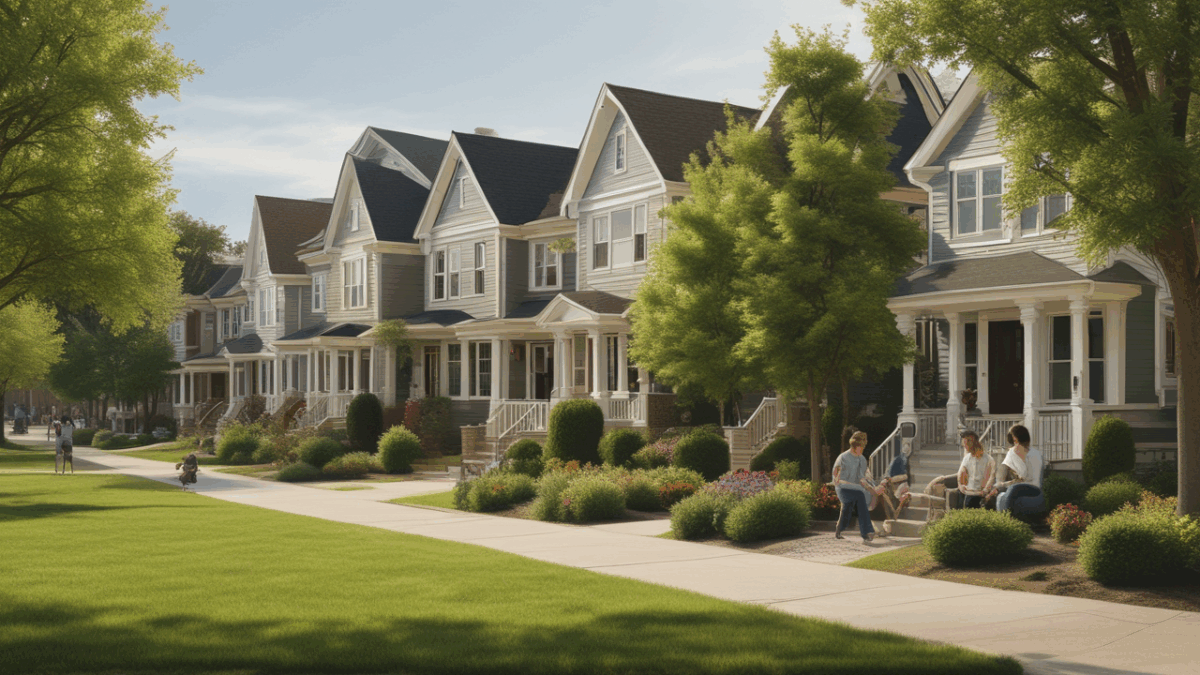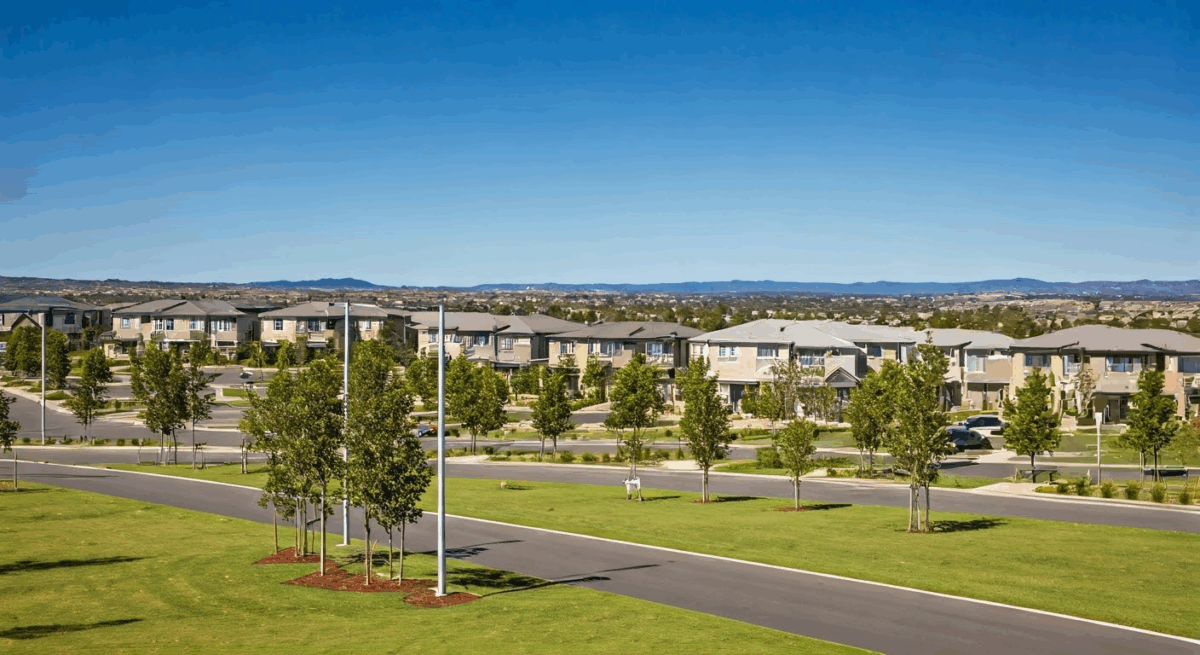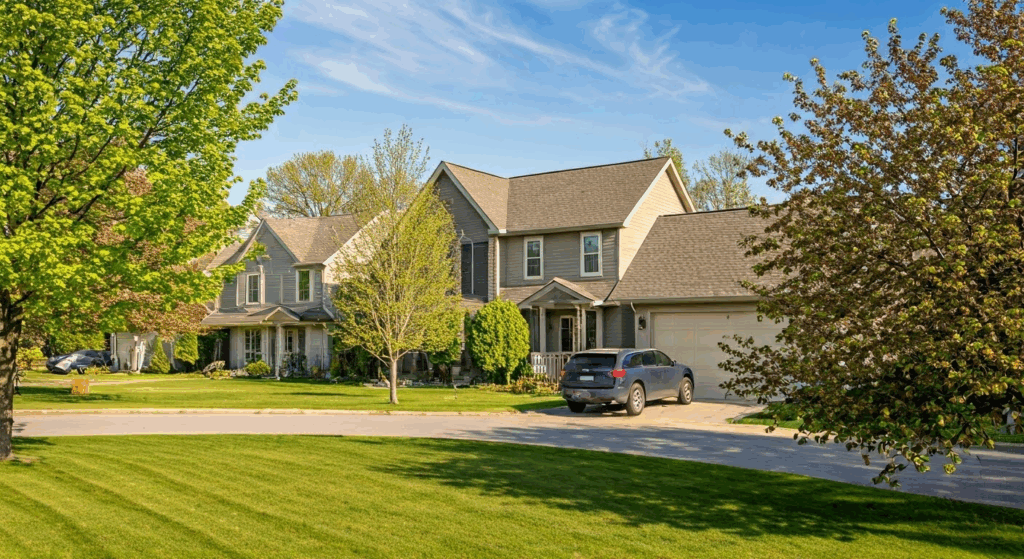Key Highlights
- The post-pandemic era has witnessed a surge in demand for suburban real estate, driven by remote work opportunities and a desire for more space. Families are flocking to suburban areas seeking larger homes, affordable neighborhoods, and a higher quality of life.
- Remote work has reshaped housing preferences, with suburban homes now serving as dual living and working spaces.
- Suburban amenities and infrastructure are evolving to meet the needs of a growing population, with enhancements in recreational facilities, shopping centers, and transportation.
- As we look ahead, suburban real estate markets are predicted to experience continued growth, though affordability and infrastructure strain pose potential challenges.
Introduction
The post-pandemic era has ushered in a new era for suburban real estate. As the world adjusted to remote work and reassessed priorities, housing demand patterns shifted dramatically. This analysis explores the evolving landscape of suburban real estate, examining the factors driving demand, the changing needs of homebuyers, and the future outlook for this dynamic market with a special focus on the impact to Strand Capital.

The Surge in Suburban Real Estate Demand Post-Pandemic
The COVID-19 pandemic marked a turning point for suburban real estate, sparking a surge in demand as people sought refuge from densely populated urban centers. This shift can be attributed to a confluence of factors, including the rise of remote work, a desire for more space and affordability, and an increased emphasis on quality of life.
As urban areas grappled with lockdowns and social distancing measures, suburban communities offered a welcome respite, with larger homes, private outdoor spaces, and a greater sense of community.
Exploring the Shift Away from Urban Centers
For decades, urban areas and city centers held a magnetic appeal, attracting young professionals and those seeking vibrant cultural experiences. However, the rise of remote work during the pandemic significantly diminished the need to live in close proximity to offices and workplaces.
This newfound flexibility allowed individuals and families to prioritize other factors, such as affordability, space, and access to nature, which suburban areas could offer in abundance. Consequently, many chose to leave the confines of city centers in search of a different lifestyle.
This exodus from urban centers has had a profound impact on real estate trends, leading to increased demand and rising property values in suburban communities, while some urban markets experienced a cooling effect. As remote work becomes increasingly normalized, it remains to be seen how this shift will continue to shape the relationship between work and living preferences in the long term.
Key Factors Driving Families to the Suburbs
One of the most significant drivers of the suburban real estate boom is the desire for an improved quality of life. Suburban areas often boast lower crime rates, top-rated schools, and a stronger sense of community – qualities that are highly appealing to families with children.
Furthermore, the pandemic-induced lockdowns highlighted the importance of having ample space. Larger homes with dedicated workspaces, playrooms, and sprawling backyards have become increasingly desirable, and suburban neighborhoods often provide these features at more affordable price points compared to urban centers.
The combination of affordability, space, and a family-friendly environment has cemented the suburbs as a highly attractive option for those seeking a better quality of life. This trend is particularly evident in areas experiencing population growth, as families migrate in search of housing and communities that meet their evolving needs.
The Impact of Remote Work on Housing Preferences
The rise of remote work has fundamentally changed where people choose to live. No longer tethered to offices, many have sought out housing markets that offer a better work-life balance – and the suburbs have emerged as a prime destination for these remote workers.
This shift has led to a surge in demand for suburban homes, particularly those with features that support both work and leisure activities.
How Remote Work Has Changed Where We Live
The ability to work from anywhere has had a profound effect on housing markets. Remote work has untethered people from the need to live near offices, allowing them to prioritize lifestyle factors and explore housing options beyond the traditional urban centers.
Suburban living, once considered primarily a haven for families, has gained popularity among a wider demographic, including young professionals and remote workers seeking a change of pace. The flexibility afforded by remote work has empowered individuals and families to re-evaluate their priorities, often choosing spacious homes and access to outdoor amenities over the hustle and bustle of city life.
As remote work becomes increasingly ingrained in the fabric of our society, its influence on housing markets continues to evolve, shaping the future of where and how we live.
Suburban Homes as Dual Living and Working Spaces
The rise of remote work has transformed the way we view our homes. Suburban homes, with their typically larger square footage, have become dual purpose spaces, accommodating both work and personal life. This shift in functionality has led to an increased demand for home offices, flexible living areas that can transform into workspaces, and high-speed internet connectivity.
Homebuyers are now prioritizing features that support a seamless transition between work and leisure. Dedicated office space provides privacy and minimizes distractions, ensuring productivity during work hours, while spacious living areas allow for relaxation and family time once the workday ends.
As the lines between work and personal life continue to blur, the need for dual-purpose homes is likely to persist, further driving the demand for larger suburban properties that can accommodate the diverse needs of today’s modern families.
Changing Homebuyer Priorities in the Suburbs
The influx of new residents to suburban areas has led to evolving homebuyer priorities. With a greater emphasis on space, privacy, and functionality, homebuyers are seeking properties that cater to their desire for a balanced lifestyle.
This shift in demand has led to an increased focus on larger homes, outdoor living spaces, and home offices, as well as a renewed appreciation for community amenities and local services.
Increased Demand for Space and Privacy
As suburbs experience population growth, so too does the demand for larger homes that provide ample space for families to live and grow. Open floor plans, multiple bedrooms, and expansive backyards have become highly sought-after features, offering flexibility and privacy for individuals and families alike.
The increased emphasis on privacy extends beyond the home itself, with buyers seeking out properties situated on larger lots or in neighborhoods that offer a sense of seclusion. Cul-de-sacs and low-traffic streets are particularly desirable, providing a reprieve from the noise and congestion often associated with urban living.
This desire for space and privacy reflects a broader societal shift towards prioritizing well-being and seeking environments that promote a sense of tranquility and balance.
The Rise of Home Offices and Outdoor Spaces
As remote work reshapes the modern workplace, home offices have become a necessity for many. Suburban real estate, with its typically larger floorplans, is well-positioned to accommodate this growing need, offering dedicated spaces for work that are separate from the main living areas.
Outdoor spaces have also taken on new importance in the post-pandemic world. Suburban homes often boast spacious backyards, patios, and decks – perfect for enjoying fresh air, connecting with nature, and entertaining guests. These outdoor areas have become extensions of the home, providing a sanctuary for relaxation, recreation, and quality family time.
The combination of functional home offices and inviting outdoor spaces has further fueled the appeal of suburban living, attracting those seeking a harmonious blend of work and leisure.

The Evolution of Suburban Amenities and Infrastructure
To keep pace with the influx of new residents, suburban areas are experiencing significant enhancements in local amenities and infrastructure. This includes investments in recreational facilities, shopping centers, and community spaces designed to enhance the quality of life for residents.
Improvements in transportation and connectivity are also underway, aiming to bridge the gap between suburban communities and nearby metropolitan areas.
Enhancements in Local Amenities to Meet Resident Needs
Recognizing the evolving needs of a growing population, suburban communities are investing heavily in enhancing local amenities. Newer and expanded recreational facilities, such as parks, walking trails, and community centers, cater to health-conscious residents seeking opportunities for outdoor recreation and social engagement.
Shopping centers are also adapting to meet the demands of suburban residents. From upscale boutiques to diverse dining options, these commercial hubs provide convenient access to goods and services, reducing the need to venture into crowded city centers.
These enhancements in local amenities are essential for creating vibrant, self-sufficient communities that cater to the needs of residents. By offering a wide array of services and recreational opportunities, suburban areas are becoming increasingly appealing to those seeking a fulfilling lifestyle.
Improvements in Transportation and Connectivity
As suburban areas continue to grow, transportation infrastructure plays a crucial role in connecting residents with employment centers, cultural attractions, and other parts of the metropolitan area. Investments in public transportation, such as expanded bus and train lines, as well as improvements to roads and highways, are essential for easing congestion and improving commute times.
In addition to physical infrastructure, connectivity in the digital realm is paramount. High-speed internet access is crucial for remote workers, students, and businesses operating in suburban areas. Communities that prioritize digital infrastructure investments are likely to attract and retain residents seeking seamless connectivity.
These ongoing efforts to enhance transportation and connectivity are vital for ensuring the economic vitality and quality of life in suburban communities. By addressing the challenges associated with growth, suburban areas can create sustainable, well-connected environments that attract and retain residents seeking the best of both urban and suburban living.
Strand Capital’s Role in Shaping Suburban Landscapes
Strand Capital plays a pivotal role in shaping the future of suburban landscapes through strategic investments in real estate development. By focusing on suburban counties experiencing rapid population growth, the firm identifies opportunities to create thriving communities that meet the evolving needs of residents.
Strand Capital is committed to supporting sustainable, community-focused developments that enhance the quality of life for individuals and families.
Investment and Development Trends in Suburban Real Estate
Strand Capital’s approach to real estate development centers around identifying emerging trends in suburban counties poised for growth. The firm recognizes that population shifts, driven by factors such as remote work and the desire for more affordable housing options, are creating significant opportunities in suburban real estate markets.
By carefully analyzing demographic data, housing market trends, and local economic indicators, Strand Capital identifies suburban counties that are experiencing rapid population growth and are well-positioned for long-term investment. These areas often exhibit strong employment opportunities, a high quality of life, and a need for new housing stock to accommodate the influx of residents.
Strand Capital’s investment strategy prioritizes projects that align with the unique characteristics and needs of each suburban community. By taking a tailored approach, the firm ensures that its developments enhance the existing fabric of these communities while also meeting the evolving demands of a growing population.
Supporting Sustainable and Community-Focused Developments
Strand Capital is deeply committed to supporting sustainable living and community-focused developments. The firm recognizes the importance of creating environmentally responsible communities that prioritize the well-being of residents and the preservation of natural resources.
Through the integration of green building practices, energy-efficient designs, and sustainable infrastructure, Strand Capital aims to minimize the environmental impact of its projects. This commitment to sustainability not only benefits the planet but also enhances the quality of life for residents, who enjoy lower utility costs, healthier living environments, and access to green spaces.
Moreover, Strand Capital prioritizes community-focused developments that foster a sense of belonging and connection among residents. By incorporating amenities such as parks, walking trails, and community centers, the firm creates spaces where residents can come together, build relationships, and enjoy an enhanced sense of community.
The Future Outlook for Suburban Real Estate
The suburban real estate market is expected to continue its growth trajectory, fueled by ongoing demographic shifts and the increasing desirability of suburban living. As remote work becomes increasingly normalized and people seek greater affordability and space, suburban areas are well-positioned to attract new residents and experience sustained demand for housing.
However, this anticipated growth also presents challenges, including maintaining affordability and ensuring that infrastructure keeps pace with population growth.
Predictions for Suburban Growth and Development
Demographic shifts, including aging populations and the rise of millennial families, are expected to sustain the rapid population growth seen in many suburban areas. This continued influx of residents will drive demand for housing, community amenities, and infrastructure improvements.
As suburban communities evolve to meet these needs, we can anticipate further enhancements in areas such as transportation, education, and healthcare. New businesses will emerge to serve the growing population, further stimulating local economies.
The ongoing evolution of suburban areas presents both opportunities and challenges. Communities that can successfully navigate these changes while maintaining their unique character and quality of life are likely to thrive in the years ahead.
Potential Challenges and Opportunities Ahead
While the future of suburban real estate appears bright, potential challenges lie ahead. As housing prices continue to rise in many suburban markets, affordability remains a key concern. It is essential for policymakers and developers to collaborate on solutions that promote housing affordability and prevent displacement of existing residents.
Challenge Opportunity
|
Rising Housing Prices |
Rising Housing Prices Increased Housing Supply |
|
Infrastructure Strain |
Investing in Public Transportation |
|
Affordability Concerns |
Affordability Conce Promoting Mixed-Income Housing Developments |
Another area of focus must be on infrastructure development. Rapid population growth can strain existing infrastructure, leading to traffic congestion, overcrowded schools, and strained public services. Strategic investments in transportation, schools, and other essential infrastructure are crucial for ensuring the long-term sustainability and desirability of suburban communities.
Conclusion
In the aftermath of the post-pandemic period, there has been a significant increase in demand for suburban real estate. Families are gravitating towards the suburbs in pursuit of larger living spaces and greater privacy. The rise of remote work has transformed housing preferences, highlighting the necessity for spaces that accommodate both living and working. Developers such as Strand Capital are adapting suburban settings to address these shifting needs, leading to an increase in sustainable and community-oriented projects. As we look ahead at the prospects for suburban real estate, forecasts indicate ongoing growth alongside possible challenges and opportunities. If you are contemplating a move to suburban living, register to keep updated on new trends and opportunities. Click here for more information.




